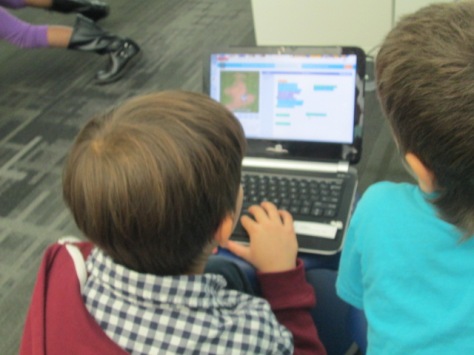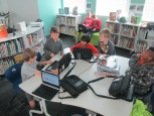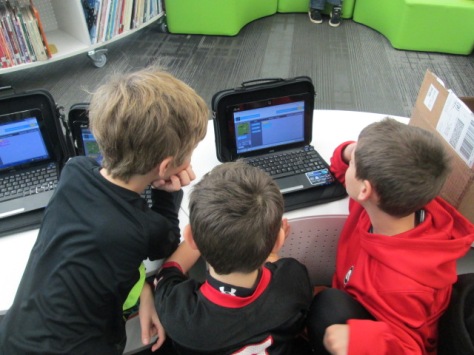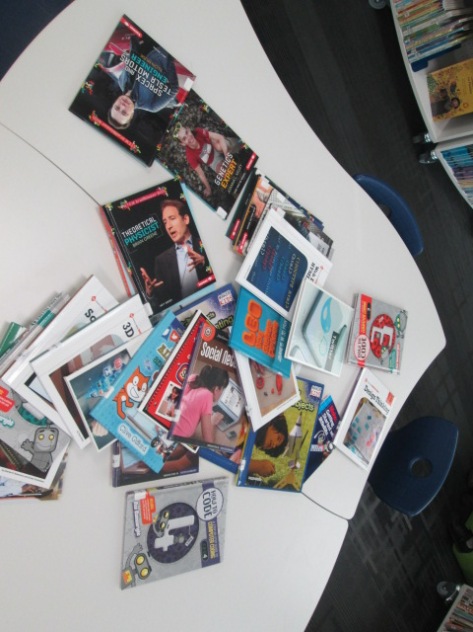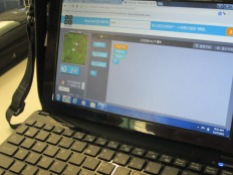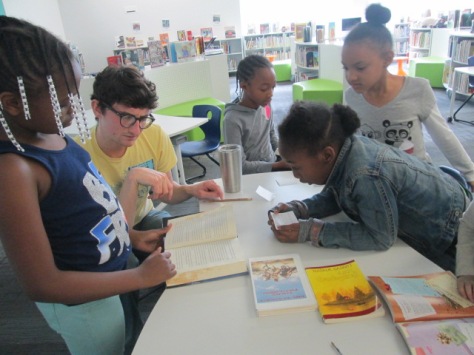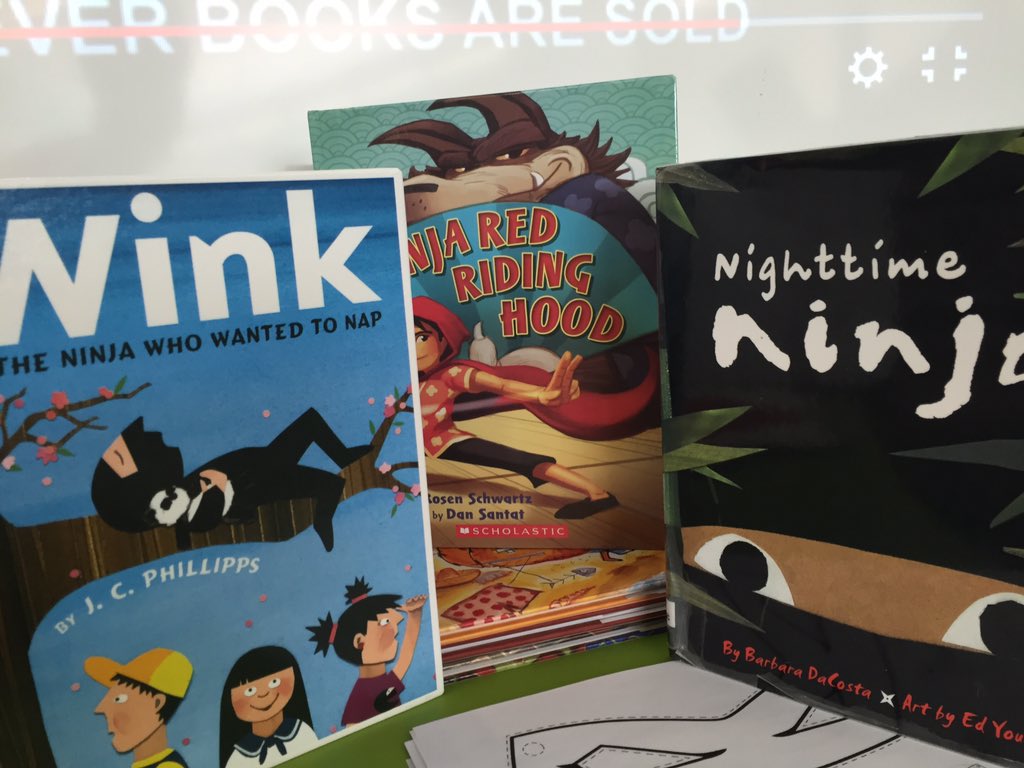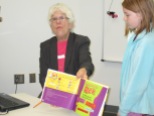
Third grade has been hard at work on a Mo Willems art and writing project. Since there is a Mo Willems exhibit at the High Museum of Art, we decided to use Mo Willems as an author/illustrator study to take a close look at how illustrators show emotion through their characters as well as how authors many times have a moral or lesson that we learn from their stories.
In the library in collaboration with Rita Foretich (art teacher), we took a close look at the whole Mo Willems collection of books. We wanted students to spend time looking at the illustration and noticing similarities and differences across series as well as how he creates simple illustrations that show a range of emotions. I pulled all of our library books for this as well as brought my whole collection from home.
In art, students have been working on characters and settings for their own stories which will include a moral of some kind. In writing workshop, students are working on the text of their stories. They will eventually come back to the library to use all of these pieces with the Puppet Pals app on the iPad to tell their stories.
Our art teacher wrote a grant to fund a field trip for the entire 3rd grade to visit the High Museum in Atlanta. Across 2 days, every student had a chance to visit the museum, tour the Mo Willems exhibit, see some additional pieces of art, and participate in an art workshop. The grant funded tickets for all students as well as transportation. We are so fortunate to have an art teacher who works tirelessly to increase access to art for our students. For several students, it was their first time visiting Atlanta and seeing the massive skyscrapers.

At the museum, we split up into two groups. One group went to an art workshop and the other group split in half for a tour with a docent. Our docent tour took us into the main exhibits to stop at key art pieces and consider materials the artist used, the story the piece was trying to tell, and to learn more about how to examine a piece of art in a safe and meaningful way.
We eventually made our way into the Mo Willems exhibit, and the docent took us to each collection of art and had students sit on the floor. At the pigeon illustrations, we looked at the many expressions of the pigeon and how Mo Willems shows emotion through eye position, movement, and facial expressions.
Students took turns standing and acting out the emotions of the pigeon to see if they agreed with the choices that Mo Willems made. She also pointed out how Mo Willems draws an illustration multiple times before doing the final illustration. Some of the pieces on exhibit showed blue, red, and black lines to show he changes Mo Willems had made along the way. Students loved looking at the final piece and seeing what changed from the original sketch.

We continued to each collection of art doing similar activities to consider emotion and movement. Students had a chance to share their favorite Mo Willems book or tell about the book that various pieces of art came from. Along the way, we learned a bit more about Mo Willems and his work with Sesame Street. Students also loved looking for the pigeons hidden throughout the museum.
In the workshop, students listened to the story Leonardo the Terrible Monster. As they listened, the museum reader pointed out the expressions of the various monsters in the story and continued the theme of having students think about movement and emotion in illustration.
Following the story, students made their own monster out of construct paper, textured rubbings, and various craft supplies. They were once again asked to think about emotion and how they were showing that through their monster. I liked walking around and seeing students and teachers positioning their eyes, mouths, and other body parts to see how it changed the look and feel of the monster. Students continued to add to their monsters right up until we packed up to leave.
It was a fabulous day at the museum and I can’t wait to see how this experience translates into the stories, characters, and settings that they are continuing to work on.


























































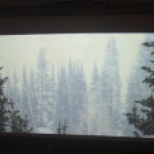










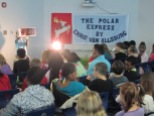



































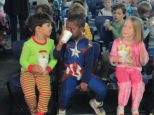





 Our open makerspace on Tuesdays and Thursdays is taking a break while UGA is having finals and winter break. However, the demand to use the makerspace doesn’t disappear just because UGA is on break. I decided to have a design challenge makerspace on two days and feature the Blokify app and our 3D printers. Since 3D printing takes a long time to complete, I decided to create some rules to help us out with the number of pieces we would need to print in a short amount of time.
Our open makerspace on Tuesdays and Thursdays is taking a break while UGA is having finals and winter break. However, the demand to use the makerspace doesn’t disappear just because UGA is on break. I decided to have a design challenge makerspace on two days and feature the Blokify app and our 3D printers. Since 3D printing takes a long time to complete, I decided to create some rules to help us out with the number of pieces we would need to print in a short amount of time.





















